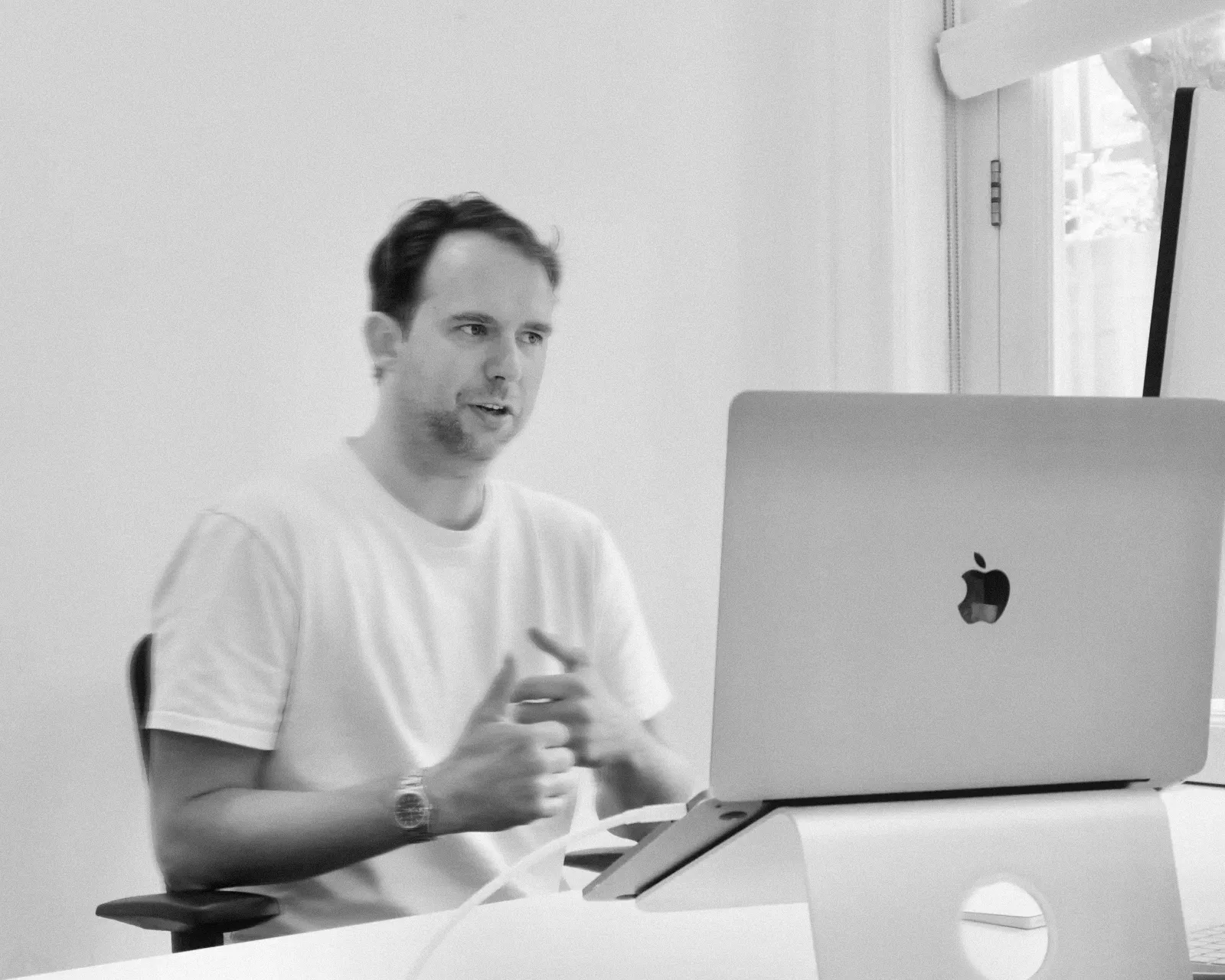How does pension investing work?
Retirement is essentially the income on which people live after retirement. It's money for later. A good pension is very important. Because we all want to be able to maintain a certain standard of living after working life.
Retirement comes in various forms. The Dutch system is based on three pillars and a fourth informal pillar. These are the AOW pension (1st pillar), the supplementary pension (2nd pillar, also known as collective) via the employer, individual pension provisions (3rd pillar, also known as annuity) and own investments or assets (4th pillar). In the next section, we explain each pillar.
Pension investing focuses on that third part (3rd pillar), building up your own money for later, with a tax advantage. This is done via a special pension account (annuity account) with a bank, investment institution or asset manager (such as Vive, for example).
How does pension investing work?
It works like this, you deposit money into a blocked account that is intended for your retirement. Your deposit is tax deductible (so that the tax authorities actually contribute part) and you do not pay wealth tax (Box 3) on these assets. Accruing a pension with a tax refund is called an annuity. Especially if your pension is still far away, investing can be attractive because it often pays more than savings in the long term.
A pension investment account looks like a regular investment account, but the money is really meant for retirement. That's why there are important rules to the game. For example, you cannot simply withdraw the balance in the meantime and it is usually fixed until (at least) your retirement date.
You open such an account with a bank, investment institution or asset manager, deposit your deposit into it, and that money is then invested for you. In many cases, this is done for you, but sometimes you still have an input into how much risk you want to take. The goal is for this wealth to grow until you retire, so that you will later have additional income in addition to state pension and possibly employer pension.
Tax rules concerning pension investments
Pension investing is fiscally attractive, but there are strict rules. Below we explain the most important ones.
Annual space:
You are not allowed to deposit unlimited amounts with a tax benefit; how much you tax-free may deposit depends on your so-called yearspace. Simply put, this is the space you have because you have a pension deficit in a given year. The annual space is determined on the basis of your income and how much pension you have already accrued through work in the previous year. If you earn more (up to a certain maximum) and you accrue little/no pension through an employer, your annual space is larger. Invest with tax benefits: annual space and reservation space
Maximum annual space:
Before 2025, the maximum annual space (with a high income and no pension via the employer) is €35.798. This limit prevents very high incomes from deducting indefinitely. Investments over your annual space are not tax deductible. You can have your personal annual space calculated annually, for example via the tax authorities tool or our calculation tool [ANNUAL SPACE TOOL].
Reservation area:
If you have not (fully) used your annual space in previous years, you can make up later. This is called the reservation area (formerly “catch-up area”). It is possible to carry up to 10 years of unused annual space, with a fixed maximum per year. In 2025, the maximum reservation space is €42.108. This means that someone with a large pension deficit from the past can deposit up to this amount with deduction in 2025, in addition to the annual space of the current year.
Tax refund — example:
Let's say you're depositing €2,000 into your pension investment account this year. If this amount falls within your annual space, you can include that €2,000 as a deduction in your tax return next year. If you earn enough, you will receive a refund of the income tax paid.
For example, if you earn in the highest bracket (~ 49.5% tax rate), you will get almost half back: €990 back from the tax authorities in this example. This amount will be deposited into your regular bank account. You can then choose what to do with this. If you invest it back into your pension account, the tax authorities will set this off against your tax refund for the following year.
Benefits after retirement date
The money is fixed:
The money in the pension investment account remains fixed until you retire (unless you die earlier or become incapacitated for work, which is subject to separate rules). You can check the balance no later than 5 years after your state pension age leave it in the account, but then it really has to start paying out.
Not paid out all at once:
You can't freely dispose of the entire amount at once when you retire; instead, you must purchase an annuity payment from a bank or insurer with the amount saved. It pays out your pension pot in periodic instalments, spread over a number of years. Under current rules, the benefit period must be at least 5 years (but it can also last for life, or, for example, 20 years — the longer the benefit period, the smaller the periodic amounts)
Paying tax:
You pay for the benefits you receive income tax (Box 1). After retirement, you often fall into a lower tax rate than during your working life, so that tax rate is more favourable. In fact, during the deposit phase, you get tax back at your current (higher) rate, and you pay later when paying out at a lower rate — an important part of the tax benefit.
Pension investing vs. ordinary investing
In short, the biggest difference between pension investing and free investing is the tax benefit and the associated obligations. When you invest “normally” (without a tax benefit), you have complete freedom.
Pension investing offers a tax diversification (benefit now, pay tax later) and usually a tax savings (due to the work/pension rate difference), but it is inflexible.
On the other hand, ordinary investing offers flexibility, you can deposit whatever you want indefinitely and withdraw the money at any time. However, your assets count in box 3 (capital return tax), so in addition to the exemptions, you pay annual wealth tax on your invested assets. There is also no direct deduction; you invest with net (already taxed) money. So no tax advantage.
Which form is better depends on your situation and goal; many people who foresee a pension deficit opt for pension investments precisely because of the significant tax advantage.
Investment strategies in pension investing
Because pension investing often takes a long time, the chosen investment strategy is important.
Lifecycle investing
A commonly used approach is lifecycle investing (here's what Vive offers). This means that the ratio between risky investments (such as stocks) and more defensive investments (such as bonds) is automatically adjusted as your retirement date approaches.
In the beginning (younger) you have a long horizon and will offensiver invested — often a large part in stocks — because temporary price declines still have plenty of time to recover.
Later, towards retirement date, the invested capital is gradually more cautious invested (more bonds and cash). In this way, the accrued pension assets are protected against a sharp decline just before you retire. Your risk profile is therefore automatically adjusted downwards based on your age and the remaining retirement period.
Many pension investors opt for this lifecycle approach, and providers often set this by default. Then you don't have to constantly adjust your portfolio yourself; the provider rebalances periodically from stocks to bonds as time goes by.
For example, if you still more than 10-12 years away from retirement are, often becomes a very offensive profile used (e.g. ~ 95% stocks, 5% bonds).
However, are you in the last 5 years before retirement, then the profile is usually highly defensive (e.g. ~ 15% stocks, 85% bonds). Actually, such a strategy tries to imitate life. It ensures that your return opportunities are used optimally in your younger years (when you are still absorbing and active), while you are no longer full of risky investments just before retirement (when you are less active).
Fixed risk profile
In addition to lifecycle investing, you can also choose to have a fixed risk profile to handle (for example, always neutral, or always offensive). This does mean that you have to take action on time if you want to reduce risk. Most experts recommend taking less risk later in life, which is why lifecycle investing is popular as an “autopilot”.
Historic returns and expectations
When it comes to investing, the question is: “What kind of return can I expect?” Although the past does not guarantee the future, historical figures do provide insight into the growth you can assume. Especially useful for considering whether pension investing is really for you.
For the Credit Suisse Global Investment Returns Yearbook is annually investigated what different investment categories have yielded since 1900. If we look at the 2022 research then the period is 122 years. From this comes that, stocks historically provide the highest return out of all the investment products you can choose (bonds, stocks, funds, etc.).
Stocks:
Globally, this is average return on stocks over the past ~120 years approximately 5.3% per annum above inflation (real return). This means that if the inflation rate was, for example, ~ 2%, it nominal return was around ~ 7% per annum (without inflation deduction).
Bonds:
Bonds (government bonds) achieved approximately 2.0% real per year, so for example ~ 4% nominal (without inflation deduction) at 2% inflation.
Save:
Savings or deposits have historically averaged less than 1% per year above inflation. This hardly provides any additional purchasing power. An easy way to calculate this for yourself is to find out what your interest rate is (at the bank) and subtract the average inflation rate. If you are left with a negative number, your money will have become less valuable.
It is important to realize that (these) returns long-term averages are. Every year, stocks can fluctuate enormously, with substantial profits and losses both occurring. Bonds fluctuate less sharply, but their returns are also lower. Over longer periods, however, stocks have almost always performed better than bonds or savings, because long-term risk is usually rewarded.
This principle is reflected in the advice for pension investing. Those who still have a long time to go can hold more in stocks for potentially higher returns, and those who are about to retire opt for bonds, or safety, to protect a previously achieved return.
Your strategy matters
Essentially, when it comes to pension investing, you invest in the same markets (stocks, bonds, etc.) as in “normal” investing. As a result, the returns are in line with the market, although minus the provider's costs.
An offensively invested pension fund (many stocks) can therefore achieve returns similar to stock indices over the long term (a few percent per year above inflation).
A defensive profile (more bonds) will come out lower, similar to bond yields.
TFuture returns are uncertain
The stock market can have long good periods, but it can also experience crashes. Prudent long-term expectations often assume that stocks have an average return of 5-7% per annum (for costs) can reach, and bonds may reach 1-3% per annum (for costs). Unfortunately, this is not a science, nothing is certain. Inflation also plays a role: in case of higher inflation, the nominal return (without inflation deduction) must be higher to achieve the same purchasing power gain.
In fact, pension investing is meant for the long term, so that temporary setbacks have time to be made up for.
It is important to to invest patiently and in a diversified manner. By diversifying widely (investing in index funds worldwide, for example), you reduce the chance that a specific stock or country will kill your entire return.

make an appointment
Ready for a modern retirement or wealth solution? Feel free to get to know Vive and discover what's possible - for your organization.
Complex pensioen, simpel uitgelegd - weet direct waar je staat
Persoonlijk gesprek voor jouw situatie en die van je werkenemers
In 30 minuten meer duidelijkheid dan uren googlen
Alle ruimte voor vragen aan onze ervaren pensioenexperts









